
Stay informed by signing up to receive our email newsletter

|
Tuesday 5th March 2019 at 08:14 By Rob |
 |
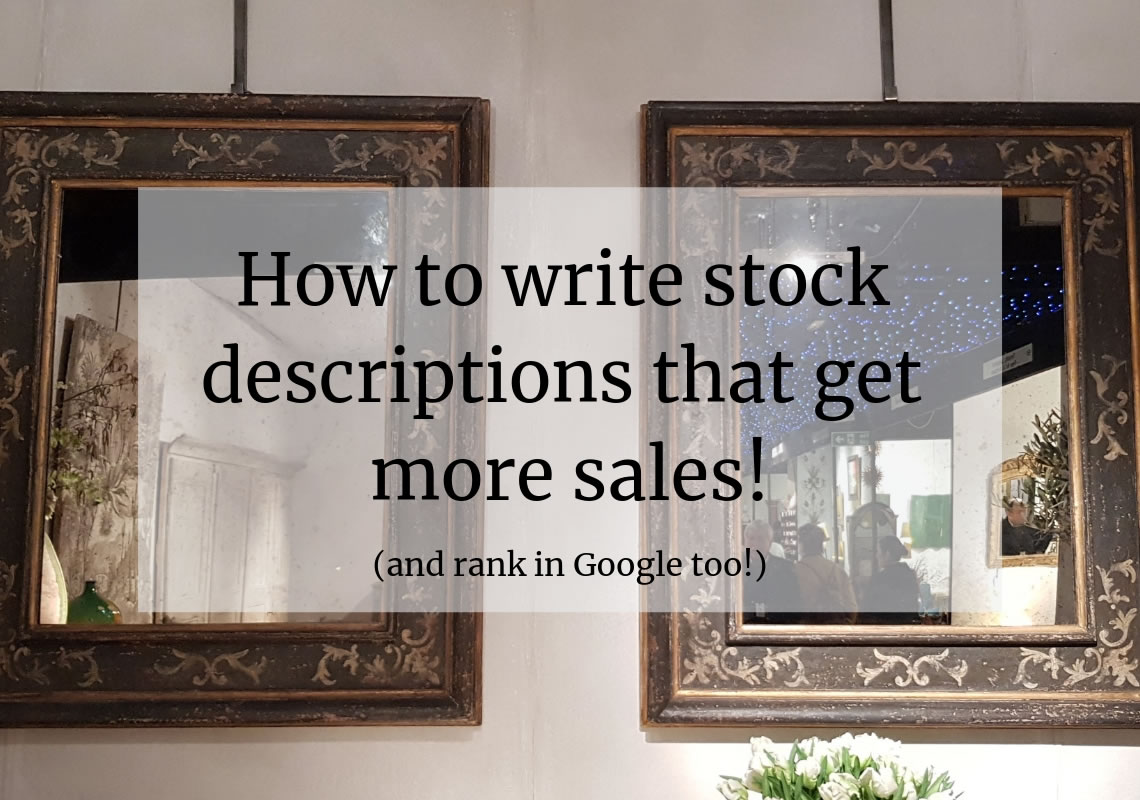
Want more sales?
Want more people to view your items?
Want more enquiries?
... read on!
In this article we'll be going over:
It isn't always easy coming up with titles and names for your stock, especially if you are in a rush, however it is really important for things such as SEO (Google Search Engine rankings) and Multi-Language websites. So it is essential that you put some time, effort and thought into how you write them as it will affect your sales!
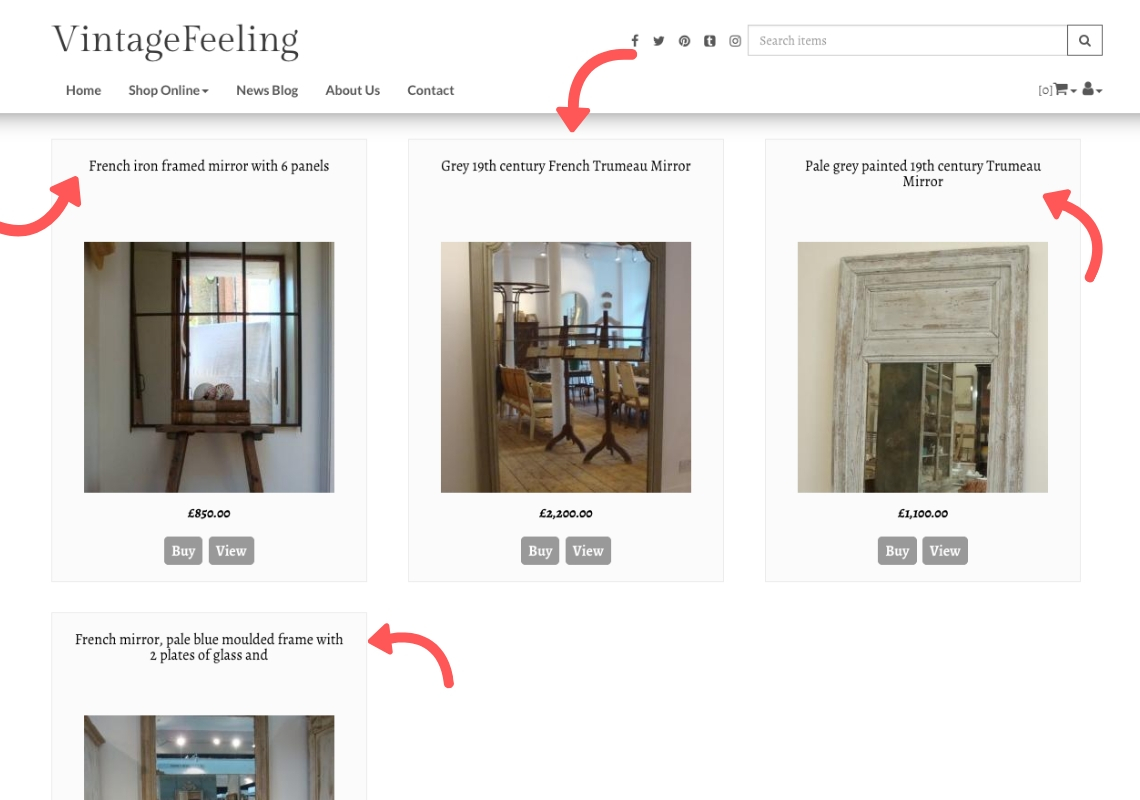
This applies to:-
A lot of the time you will see very generic stock names/descriptions with nothing much more than 'Oak table' in the item name. A BIG no no!
You should be specific with your item titles and names in order for them to be more likely to be picked up by search engines as it's much easier to get ranked for "long tail" searches than "short tail" searches (eg more specific searches vs less specific ones).
Put yourself in a customers shoes and look at the way you would use a search engine to shop. You would be as specific as possible with what you're looking for, because you don't want to have to trawl through loads of websites or pages on Google to find what you're looking for.
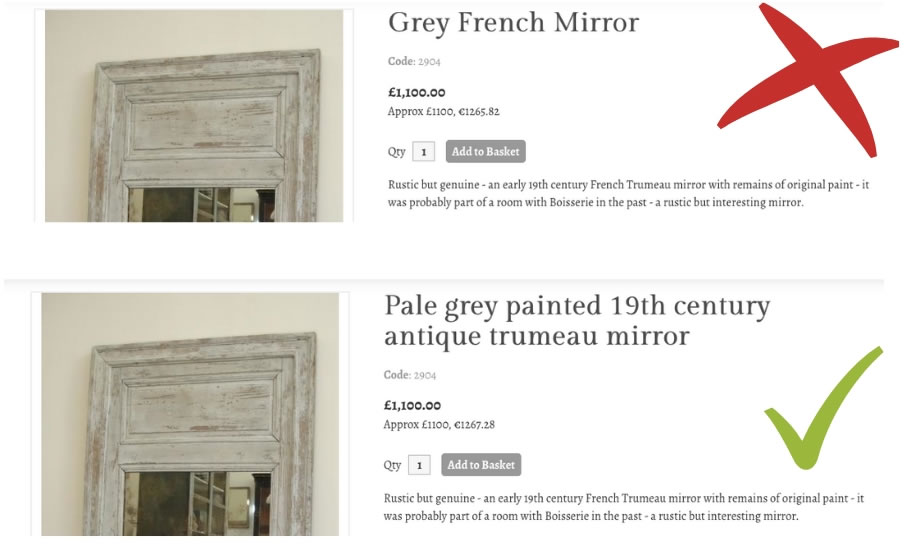
In the shoes of an antiques dealer / website owner...
In the shoes of the buyer searching for an item...
This can be simply rectified by using a detailed item title when listing the item on your website.
Image Credit: Pure White Lines
If your website has been built properly (ours are, see our portfolio at www.antiqueswebdesign.com), then the title / name of the item appears in really important places for Google, such as:-
These are key places that Google uses to work out what the "subject" or "topic" of a web page is, so it's really important you give it as much information as possible so Google can pick it up!
If you want to specifically optimise your item titles for what people are searching for on Google, you can check for what is popular and what is trending by using Google Trends, or plan keywords using Google's Keyword Planner.
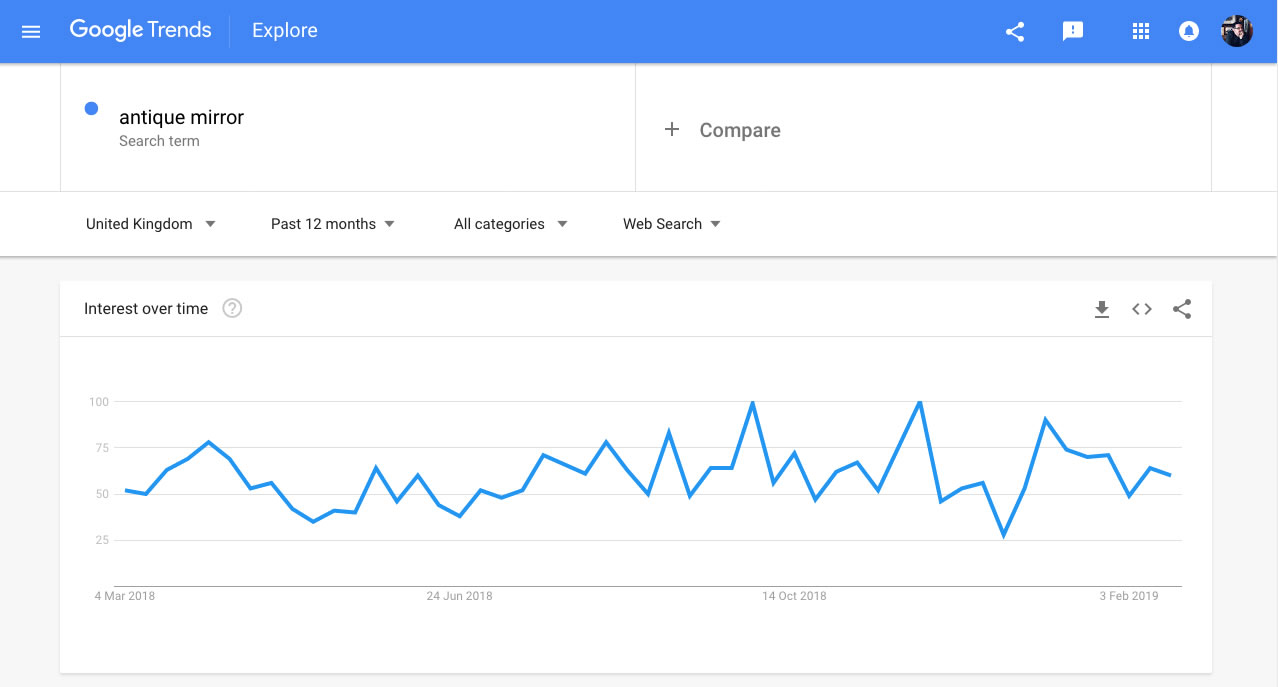
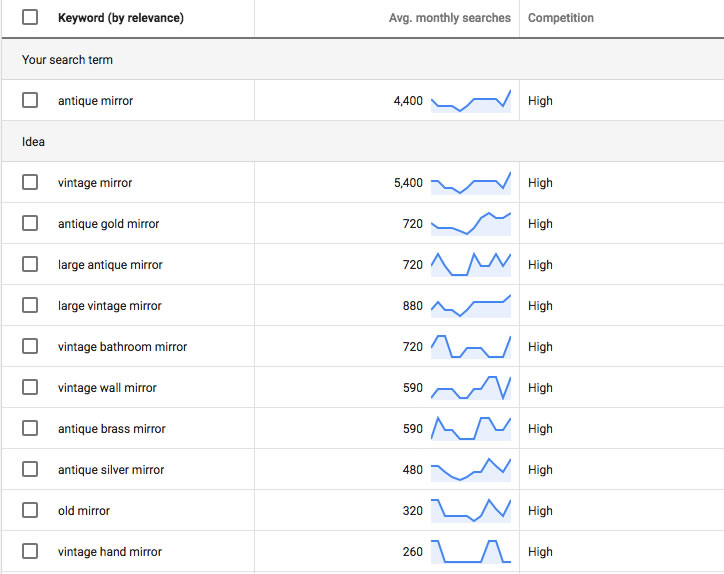
As above, think about what sort of wording and phrases people will use to search for the item, maybe it's from a specific period, place or has a specific feature e.g 18th century, Italian and Gilt. Also include the size, the colour and what it's made from.
A lot of people like to capitalise all of their item/product name for aesthetics when ideally, you should only really capitalise the first letter of each proper noun. This is especially important when it comes to multi-lingual websites, as if you capitalise the first letter of every word, or capitalise everything, often it won't get translated.
So words you would capitalise the first letter of:-
Words you would not capitalise the first letter of:-
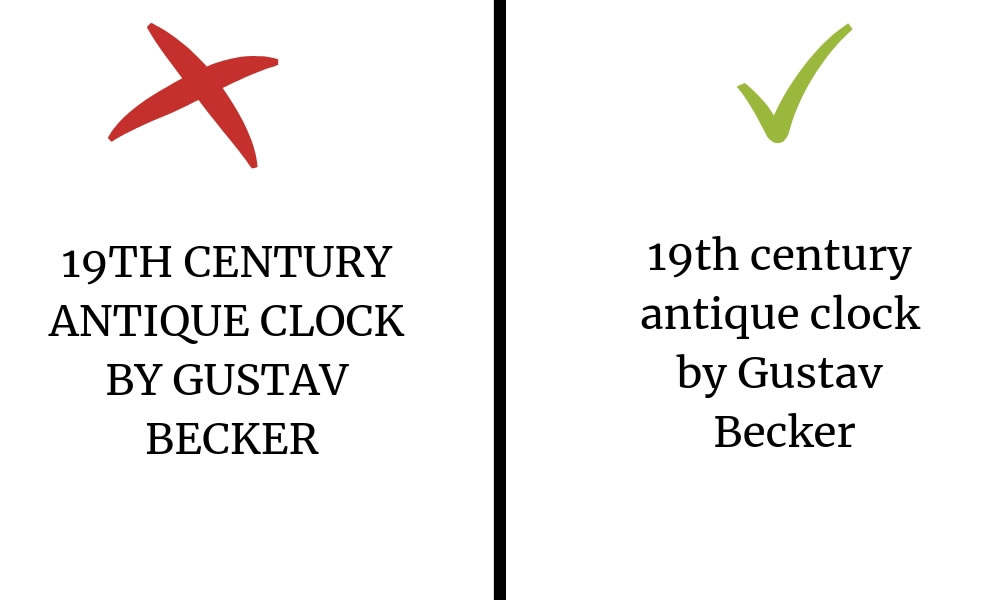
Whilst we don't profess to being grammar experts, many visitors to your website will spot these kinds of mistakes and it reduces your credibility as a professional business / organisation.
Don't hit that space bar too hard!! Sometimes we see clients put several spaces in between words where they aren't actually necessary. Avoid doing this if they aren't necessary.
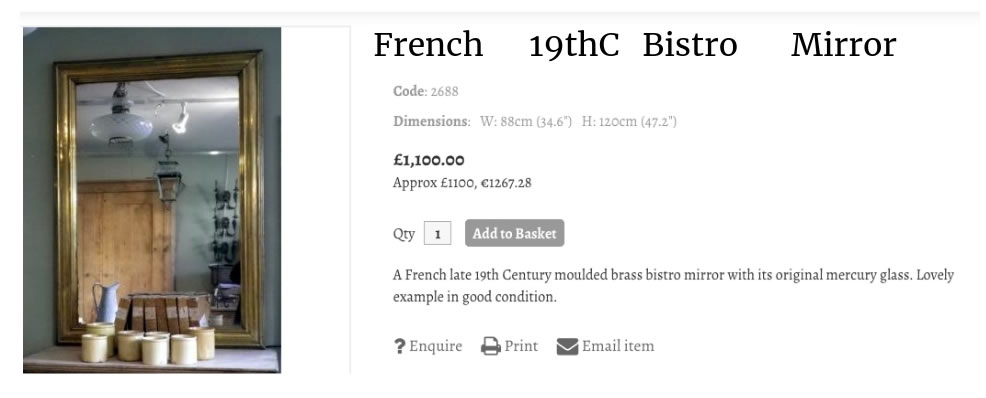
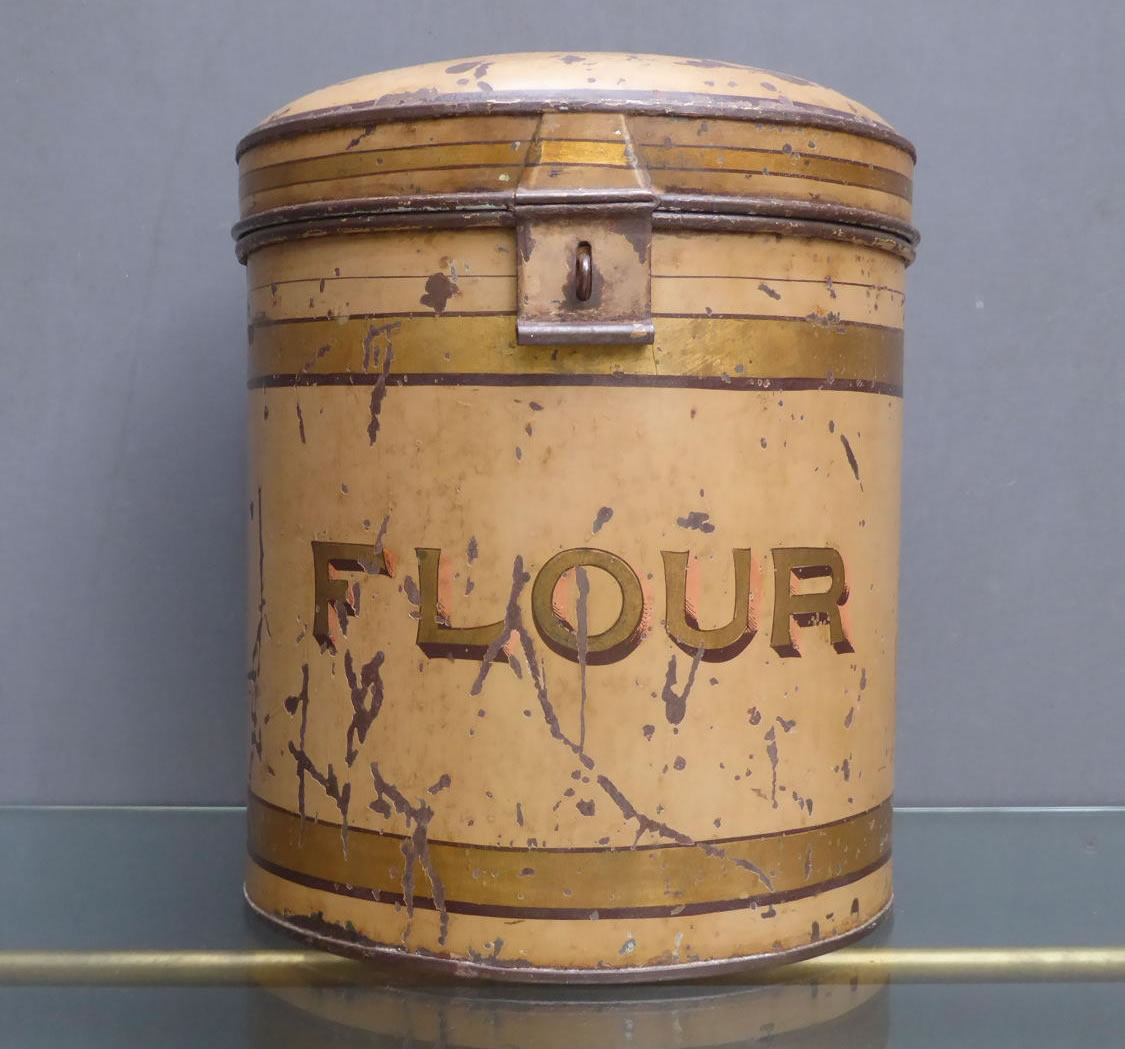
This is especially important for products/items and categories. Ensure that they are descriptive and "do what they say on the tin". So a can of baked beans would be called "Can of baked beans".
Sometimes we see website owners try and get too clever (creative??) with their item names, but all it does is confuse people, and results in people leaving their website.
Image Credit: Room 8 Interiors
By "front load" we mean putting the most important keywords as close to the beginning of the item name as possible, and the least important afterwards.
When people view are searching on a mobile device (eg with a smaller screen) there is only so much room, so you want the most important words that will grab their attention and make them think "ah, I've found just what I want!" to appear first.
We've covered a lot about the item title, but how about the more detailed description you see when you click to view an item?
Here's a few key tips:-
Image Credit: Alex MacArthur Interiors
a) Don't be lazy!
b) Use keywords that people are searching for
c) Use the correct grammar
d) DON'T USE CAPITAL LETTERS WHEN YOU DON'T NEED TO
The more effort you put in, the better the results you'll get, and the more likely hood you'll be found on Google too!
We can help you sell online easily too!
We have been businesses sell online easily since 2004, and we can help you too.
If you need a new website for your business, contact us on...
Click here to contact us by email
or call us onAs well as a hand held service, all our customers receive a copy of our marketing tips book which gives you lots of tips and advice on this on how to succeed online.